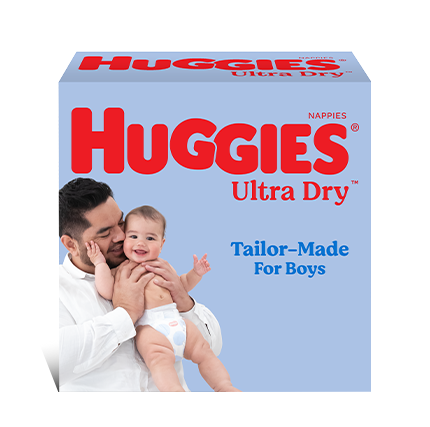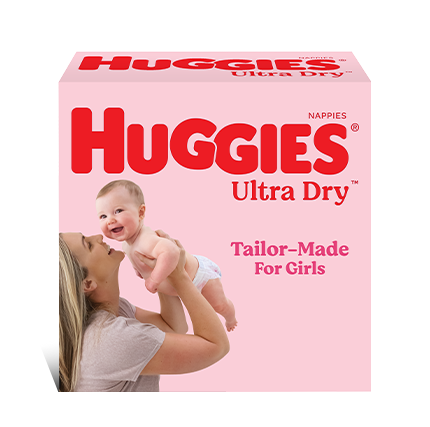There’s no getting away from it, labour is painful. But it’s often described as “good” pain – like running a marathon or climbing a mountain. It’s also manageable pain.
You may choose to get help from medical technology to manage the pain – through drugs – or you may use alternative non-drug methods for pain management.
The decision about how you will birth your baby is ultimately your choice; while it’s important to listen to your caregiver’s advice, in the end, it’s up to you whether you will aim for a medically-managed or a natural birth.
Most pregnant women will admit to being a bit anxious about childbirth. Like any big fear, admitting you’re worried and trying to specify what exactly you are frightened about will help you to deal with your fears.
And if you’re not just a bit scared about delivering a baby, with a head the size of a small pumpkin, via your nether regions after hours of painful contractions, you may just be in a bit of denial!
(It can help if you try to keep in mind that nearly all the 6 billion of the humans currently on the planet got here this way, so it can’t be all that bad!)
Get as much information as you can about your options before making your decision about the way you feel is right for you to approach birth. No-one else can make this choice for you.
It’s important to discuss and prepare for your chosen pain relief method, well in advance of the time you will be going into labour.
Using non-drug pain relief for labour and birth
I’m usually a bit of a wimp, so close friends and family fell about laughing when I announced I was planning a drug-free natural birth with my first pregnancy.
I was inspired by a book I had read called Active Birth, by Janet Balaskas, which detailed the importance of being upright in labour and talked about the consequences of drug-based pain relief in labour, including increased likelihood of further medical interventions.
(Before reading that particular book, however, I confess I’d imagined a scenario straight from an episode of ER, with blue-gowned George Clooney look-alikes gently encouraging me to “push” as I reclined on a luxurious hospital bed.)
Breathing and Positioning during labour and delivery
Labour pains come in waves and your ability to handle the pain is usually dependant on you getting into your body’s rhythm and “riding” the waves of pain by adjusting your breathing and the physical position of your body to the contractions.
It all sounds very New Age, but it is surprisingly instinctive and effective – and most midwives, doctors and even obstetricians are very accustomed to women birthing this way. After all, we’ve been doing it for nearly 200,000 years.
Most antenatal classes will demonstrate the deep, abdominal breathing that is used in labour. If you can find a good pregnancy-specific yoga class, you will have plenty of time to practice breathing and stretching techniques to help you through your pregnancy and also in labour.
Moving your body through a range of positions to help you deal with each contraction can be an effective way of managing pain.
Lying on your back during labour is probably the most painful position you can adopt, even if George Clooney is in the room. Moving around, getting into positions that take the weight off your back and keeping upright so that you use gravity to help the baby descend through your pelvis are all well-documented as being effective in speeding the progress of labour as well as managing pain.
Upright positions that fully support the labouring woman might involve leaning on your partner or getting other physical support from partners, pillows, beanbags or other furniture – even those blow-up fitness balls can help.
Pelvic rocking, bent knees, squatting, kneeling on all fours, the odd bit of hula dancing – all of these can be useful pain-management techniques.
Massage during labour
In most labouring women, the pain of contractions across the abdomen is accompanied by lower back pain; gentle massage, perhaps with an unscented massage oil, can be a real relief at this time.
Heat packs during labour
A hand-towel soaked in very hot water and then wrung out makes a hot compress that provides excellent pain relief either for the belly or lower back (or both). “Wheaties” (fabric bags filled with grains and heated in a microwave) or heated gel-packs are also effective. Check that your delivery suite has a microwave; I sent one poor midwife touring the hospital for a microwave before she finally hogged the doctor’s tearoom after I turned up with a stash of wheaties and discovered there was no microwave.
Hot showers during labour
A very warm shower, with the stream of water directed onto your lower back, can bring relief during contractions. Birthing a baby is a messy business, you’re often leaking amniotic fluid everywhere and sweating, so you’ll often feel better overall after spending some time in the shower. In most hospital labour wards, you can put a chair, perhaps with plastic cushion, in the shower and prop there for a while.
Baths/Birthing pools
Many people having a home-birth will hire a small portable pool or large deep bath that can be filled with warm water; many labour wards and most birth centres have large baths. If you’ve enjoyed swimming in the later part of your pregnancy you will know how magic it feels to lug your huge unwieldy body into a mass of water and suddenly become weightless. It can be much easier to deal with your contractions in warm water and often you will get some relief from the lower back pain. Talk to your caregiver if you’re thinking about birthing your baby in water; it can be a wonderful birth option if your caregiver is comfortable with it and there are no pregnancy complications.
Hypnobirthing as pain relief
There are a number of people who offer courses for pregnant women in “hypnobirthing;” this is a program of deep relaxation, visualisation and self-hypnosis that teaches women to replace concepts of long, painful labour with expectations of calm, relaxed, comfortable birthing. Hypnobirthing teachers believe a lot of the pain of childbirth is caused by fear that releases hormones that constrict the birthing muscles and by teaching deep relaxation techniques, women produce more endorphins (“feel-good” natural pain-relieving hormones) and therefore have a shorter, far less painful birth. A book called “Hypnobirthing” by Marie Mongan is a good introduction to the technique.
Hypnosis, acupuncture, acupressure, aromatherapy, TENS
There are a variety of qualified practitioners in alternative therapies who offer services to help a labouring woman; these may reduce pain and increase comfort levels effectively for you. If you’ve got an alternative therapy in mind, try to find someone experienced, with credible references, who will work with your preferred caregiver.
Do watch out for scams, though; while there are some excellent alternative therapies available, there are also opportunists who recognise and take advantage of the fact that pregnant women very vulnerable. (After all, who wouldn’t want to believe someone who promises to take all your pain away for a decent sum of money?)
Drug relief for labour and birth
Gas
Most hospitals offer “gas” or “gas and air” to help with pain relief. You’re fitted with a breathing mask that delivers a 50/50 mix of nitrous oxide and oxygen. Some women report that it’s very helpful, others hate it because it makes them feel light-headed and nauseous. There are no side-effects for the baby, so gas is also offered in birth centres and sometimes by home-birth practitioners.
Pethidine / Demerol
Another pain-relieving drug is pethidine (or similar opium-derived drugs). It’s given as an intra-muscular injection. While some women find incredible relief from pethidine, others report feeling nauseous or losing focus and feeling “spaced out” and disconnected.
There is some controversy about opiate use in labour, despite having been used for decades. Opiate drugs administered in labour do cross the placenta and will be absorbed by your baby. In some cases they may have serious side-effects on the baby – like breathing difficulties at birth and problems in establishing breastfeeding; however it is more likely that the baby will just be sleepy for a day or two following the birth.
Epidural Anaesthesia
This is the ultimate labour painkiller, according to many women who have had an epidural; you’ll go from painful contractions to being numb from about the waist down. I’ve heard more than one mother report sitting up comfortably in bed with a cup of tea and a crossword in late labour, thanks to an epidural.
An epidural must be administered by a specialist anaesthetist, so it’s not available in a home birth or birth centre.
Timing is critical; epidurals work best when administered at around five centimeters dilation, when contractions are getting very strong. If you’ve got to about eight centimeters without it, most doctors won’t recommend it as it won’t “wear off” in time for you to push.
An anaesthetic is injected close to the spine, with a catheter left in to allow a later top-up. Often, you will have no feeling in your lower body, although many anaesthetists now give a dose that allows some movement in your legs.
On rare occasions, women have reported that the anaesthetic has only worked in half of their body, or it “misses a bit.”
The advantage (apart from instant relief from pain) is that this drug does not affect the baby. It can be very effective in controlling high blood pressure, although it can also drop your blood pressure too low, so a catheter with fluids is usually inserted into your arm to control this.
You’ll usually be confined to bed and may have a catheter inserted to empty your bladder – as you won’t know when to “go” – and that can make urinating a bit uncomfortable for the next few days. Labour will usually take longer, which can be more stressful for the baby, so your contractions, and your baby – will be constantly monitored, with an electronic fetal monitor probably attached to the baby’s head and a monitor across your abdomen to measure contractions.
And while you escape the building pain of contractions, you may not be able to push effectively, so if you do have an epidural, you’re much more likely to have a forceps or vacuum delivery or even a caesarean delivery, if the baby is in distress. You are more likely to have stitches and trauma to the vaginal and perineal area as a result.
Do talk to your caregiver and ask as many questions as you can, if you think you may want an epidural.
Article written by Fran Molloy, journalist and mum of 4.
Last Published* December, 2022
*Please note that the published date may not be the same as the date that the content was created and that information above may have changed since.

















